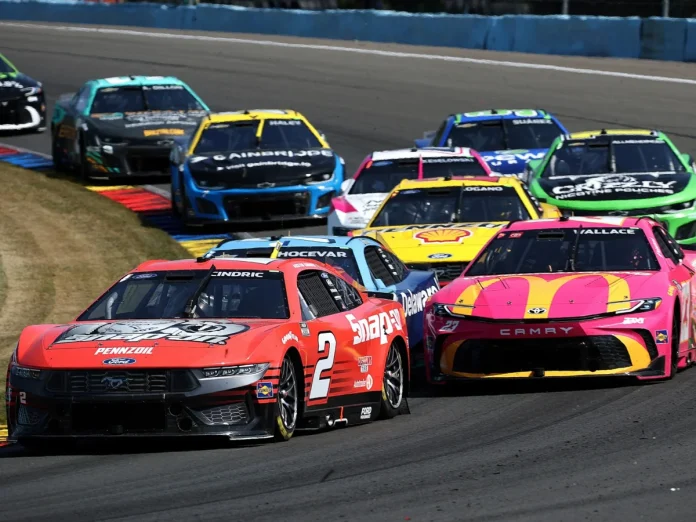Austin Cindric on Xfinity vs Cup Series has become a topic of discussion following a recent interview with the Team Penske driver. Cindric provided an in-depth look at the handling differences between the two series, focusing on the impact of turbulent air and the driving dynamics that shape late-race action.
Cindric emphasized that every level of motorsport faces challenges with “dirty air,” the turbulent airflow created by cars moving at speed. He pointed out that Xfinity Series cars, due to their longer rear quarterpanels, experience very different aerodynamic effects on competitors compared to the Cup Series cars. According to Cindric, this design difference significantly influences how drivers can affect each other’s cars in close racing situations.
“I feel like in the Xfinity car with the longer rear quarterpanels, you could definitely affect the car in front of you by your proximity a lot more than you can in our (Cup Series) cars. On the flip side, taking air off each other’s doors in the Truck and Xfinity car also affects the racing.”
—Austin Cindric, Team Penske Driver
The Next Gen car in the Cup Series promotes more side-by-side racing, which, according to Cindric, could be interpreted as either positive or negative, depending on perspective. The increased competitiveness of the Cup Series field also plays a role in shaping the race’s intensity. Cup Series drivers, as Cindric notes, are extremely skilled, making overtaking a more complex challenge due to minimal lap time differences between competitors.
“That’s the nature of having a highly competitive series. If I’m half-a-tenth to a tenth faster than you in any series, am I going to realistically expect to pass you? That’s going to be a hard pass to actually make. I’m going to have to go off the line, have a big enough run, so I think there are a lot of details other than just the air.”
—Austin Cindric, Team Penske Driver
Ultimately, the way drivers navigate air resistance and the variable tactics employed by each in passing scenarios contribute to the character and strategy of races. Cindric also recognized that tracks offering multiple racing lanes give way to more exhilarating competition, further differentiating racing experiences between series.
Late-Race Intensity: Is It the Cars or the Circumstances?
An uptick in late-race aggression in the Cup Series has fueled debate about Next Gen car parity. When questioned whether this mechanical parity increases end-of-race intensity, Cindric offered his candid insight, stating that the pressure to make moves as time runs out leads to fiercer racing across all series—not just in the Cup field.
“I think you’re going to get close to the end of the race in any series and you’re going to have an uptick in aggression,”
—Austin Cindric, Team Penske Driver
Cindric’s reference to recent races, such as those at Watkins Glen in both the Xfinity and Truck Series, highlighted the commonality of late-race incidents, regardless of the car’s generation. He pointed out that drivers are naturally compelled to take bigger risks in the final laps in pursuit of better finishing positions.
“I mean, you watched Watkins Glen in the Xfinity and the Truck Series. We wrecked a bunch of stuff just because it was the end of the race, so I feel like that is just racing.”
—Austin Cindric, Team Penske Driver
For Cindric, the urgency to gain spots in the waning moments of a race transcends technological differences and is simply a core element of competitive motorsports. As he heads to Richmond for the upcoming race with his playoff berth already secured, Cindric’s comments cast a spotlight on the dynamic between equipment and driver behavior at the highest levels of NASCAR.
What Cindric’s Analysis Means for Racing Fans and Competitors
Cindric’s observations on the distinctions between Xfinity and Cup Series racing underline the complex relationship between car design, field competitiveness, and race strategy. For drivers, this means adapting to nuanced aerodynamic effects and heightened parity that collectively raise the bar for overtaking and defensive driving. For fans, these factors often result in charged late-race showdowns and dramatic finishes, especially at critical tracks such as Watkins Glen and Richmond. With the Next Gen car continuing to shape competition, expectations remain high for more turbulence—both on and off the track—as the season unfolds.


